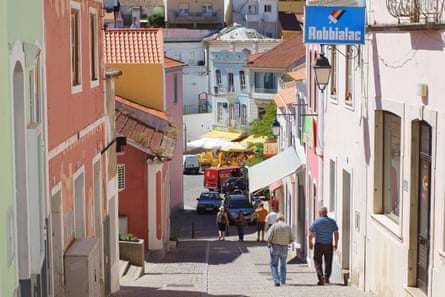
Winning tip: Coast path to secluded beaches, Sintra
Cabo da Roca, 12 miles west of Sintra, is a must-visit, but it was odd there so few people joining us on the well-laid-out coastal footpath. Walking from Cabo da Roca seven miles up the coast to the next town, Azenhas do Mar, was one of the best routes I’ve ever hiked. We dropped in on secluded and beautiful beaches via steep offshoots of the coast path. But everything it set up perfectly, with proper ropes alongside the footpath so that you can use it to safely climb up and down the hills. The beaches, including Praia da Ursa and Praia da Adraga, are just simply breathtaking.
Christina Tang
Alternative Algarve
If you want to escape the summer crowds in the Algarve, head 16 miles (25km) north-west of Loulé to Alte – a village with a quintessential Algarve architecture, quirky street art and picturesque natural water springs. Praia Fluvial de Alte is a river beach with banks lined with trees, stone arches, and natural springs Fonte Grande and Fonte Pequena are an enchanting sight even during seasonal droughts. My favourite time in the year to visit Alte is in early spring when the scent of orange tree blossom drifts in the air, swallows are busy building nests, and local pastelarias sell a delicious traditional Easter sweet potato cake.
Sey
Dark skies, Alentejo
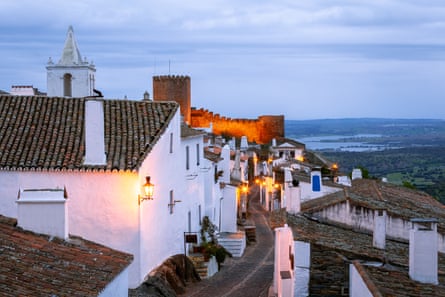
Monsaraz is among the country’s most ancient villages. We loved walking by the old village walls, passing miniature-like cottages made of lime and schist until reaching 14th-century Monsaraz Castle, which has an old bullfighting arena offering spectacular panoramic views over vast Alqueva lake, perfect for golden-hour photos. We also enjoyed a short boat trip to Ilha Dourada on the lake, where some sand grains glisten gold and there is a distant view of Monsaraz on its hilltop. At nearby Cumeada a Dark Sky observatory offers breathtaking guided telescope tours of planets, stars and distant galaxies.
Ula
Under canvas, Serra da Estrela

Two hours east from Porto gets you to the Serra da Estrela national park, home to Portugal’s highest mountain range, historic hilltop villages, and farms that stretch from the winding valley rivers with terracing up the steep slopes. Near to the quaint town of Faia on the north-eastern edge of the national park, you’ll find Vinha da Manta (from around €165 a night in summer), a camp and glamp site over 14 hectares of glorious verdant terrain, owned and hosted by Dutch couple Jacqueline and Menno. Rustic canvas lodges provide the main farm accommodation, and Menno’s buffet, mostly sourced from the couple’s sustainable farm and vegetable garden, is terrific, and can be enjoyed around communal tables.
Camilla James
Head for the hills, Peneda-Gerês national park

The Peneda-Gerês national park, straddling the border between northern Portugal and Galicia, Spain, is a wilderness-lover’s dream with superb hilly oak-forested scenery and plenty of great waterfalls. Base yourself in the achingly pretty village of Pitões das Júnias, put on your hiking boots, and head out into some of the most stunning scenery you’ll find on the Iberian peninsula. Take your pick from the cascatas (waterfalls) – Cela Cavalos and Portela do Homem are among the highlights – the perfect way to refresh yourself from the scorching heat. Round off your day with some hearty feijoada à transmontana (bean stew made with beef or pork) and vinho verde (€15) at Casa do Preto back at the village.
Jack Taylor
after newsletter promotion
Aqueducts and fairytale castles in the east
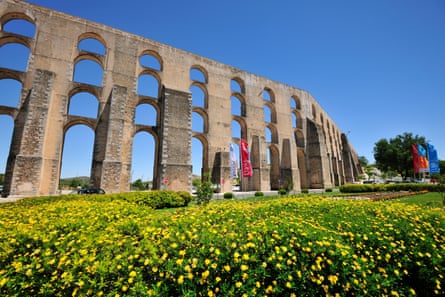
Often seen as little more than a stop-off point on the border, adjoining Spain’s Badajoz, Elvas (in central eastern Portugal) merits a closer look. The city walls, highly accessible, conjure up the feel of a clifftop walk, with each curve opening up another sweeping vista of impossibly distant views, fairytale castles, ancient aqueducts and the star-shaped Forte de Nossa Senhora da Graça (half a mile to the north); all to be visited the following day. Elvas is one Unesco world heritage town that doesn’t rip you off and that gives more than promised. Accommodation is reasonable, and food is plentiful and diverse. We have stayed twice at the Varchotel (doubles from around €80 B&B), with its two restaurants and typically Portuguese courtyard. Easy and accessible.
Jonathan Bradley
Dare you enter the chapel of bones
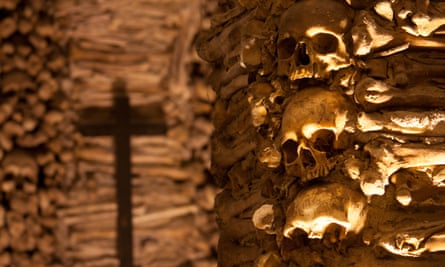
The historic capital of the Alentejo region, Évora (about 80 miles east of Lisbon) boasts a beautifully well-preserved old town, surrounded by ancient walls. Cultural highlights include a Roman temple and aqueduct, various palaces, the domineering cathedral and, perhaps most intriguingly, the Capela dos Ossos – a Franciscan chapel whose interior is covered completely in human bones. Évora has been chosen to be European capital of culture in 2027, so get there before it hits the mainstream.
Mike L
Profile
Readers’ tips: send a tip for a chance to win a £200 voucher for a Coolstays break
Show
Guardian Travel readers’ tips
Every week we ask our readers for recommendations from their travels. A selection of tips will be featured online and may appear in print. To enter the latest competition visit the readers’ tips homepage
–
Islamic heritage, Mértola
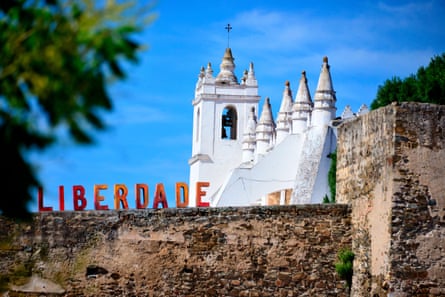
Mértola is a charming but overlooked, town located in the Parque Natural do Vale do Guadiana in the Alentejo eight miles from the border with Spain. The Mértola Islamic festival takes place each May and is a fascinating reminder of the colourful and varied past of this part of Iberia. The Museu de Mértola is worth a visit with some excellent exhibitions featuring Islamic art and a Roman house. There are a good number of excellent restaurants that serve up traditional Alentejo cooking, accompanied by the superb local Herdade dos Lagos red wine.
Toby Reynolds
Walk the old train lines, Sever do Vouga
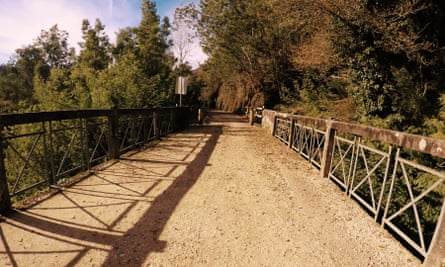
Portugal has done a wonderful job of converting old train tracks into footpaths. One of these – and my favourite – is close to the town of Sever do Vouga, about 20 miles inland from Aveiro. The route starts at the former Paradela railway station – now a cafe – and goes through several old tunnels as it winds its way around the mountains with lovely views of the Vouga River below. There is a long circular route, but with a young family you can walk as long as you like before turning back. After grabbing a sandwich it’s a five-minute walk down to the river beach Quinta do Barco. There’s canoe rental in the summer and a publicly enclosed swimming area in the river for kids. With the summer heat I prefer a dip in the river itself.
Abs Tangri
Watermills and stepping stones, Cambra

The Serra do Caramulo looms over us its towering 1,000-metre summit obscured in menacing clouds. We start a seven-mile walk from the town of Cambra (about 50 miles south-east of Porto), where the chief landmark is a medieval tower. We cross a Roman bridge in search of an aqueduct, hand-hewn in granite rocks, part of a complex network of channels and watermills. A stone-paved road leads us to stepping stones across another river. Another highlight is a cave where, according to legend, a werewolf lives. This is just a small part of less-known central Portugal, rich in history, culture and natural heritage.
Justina



